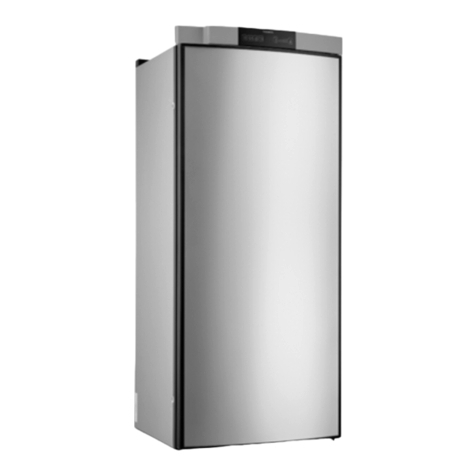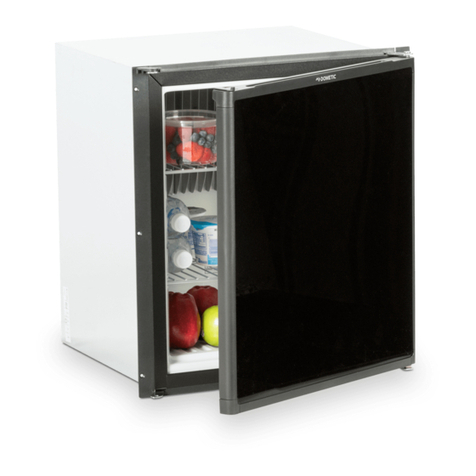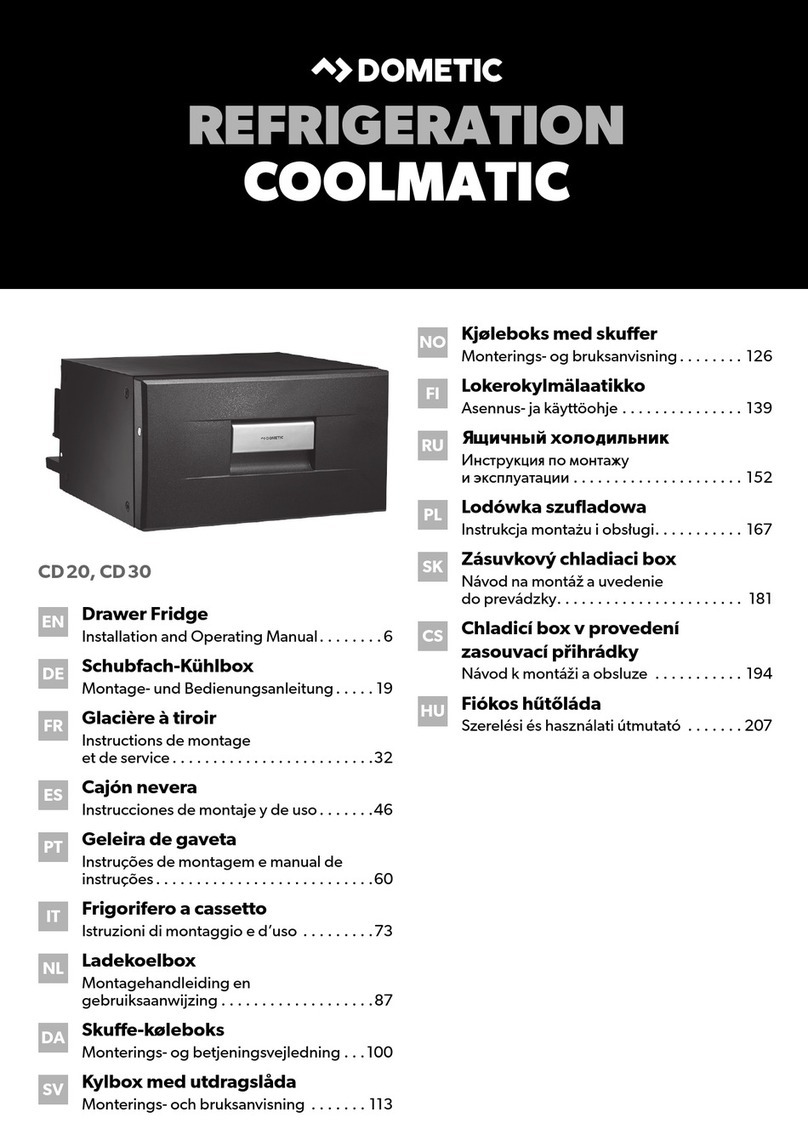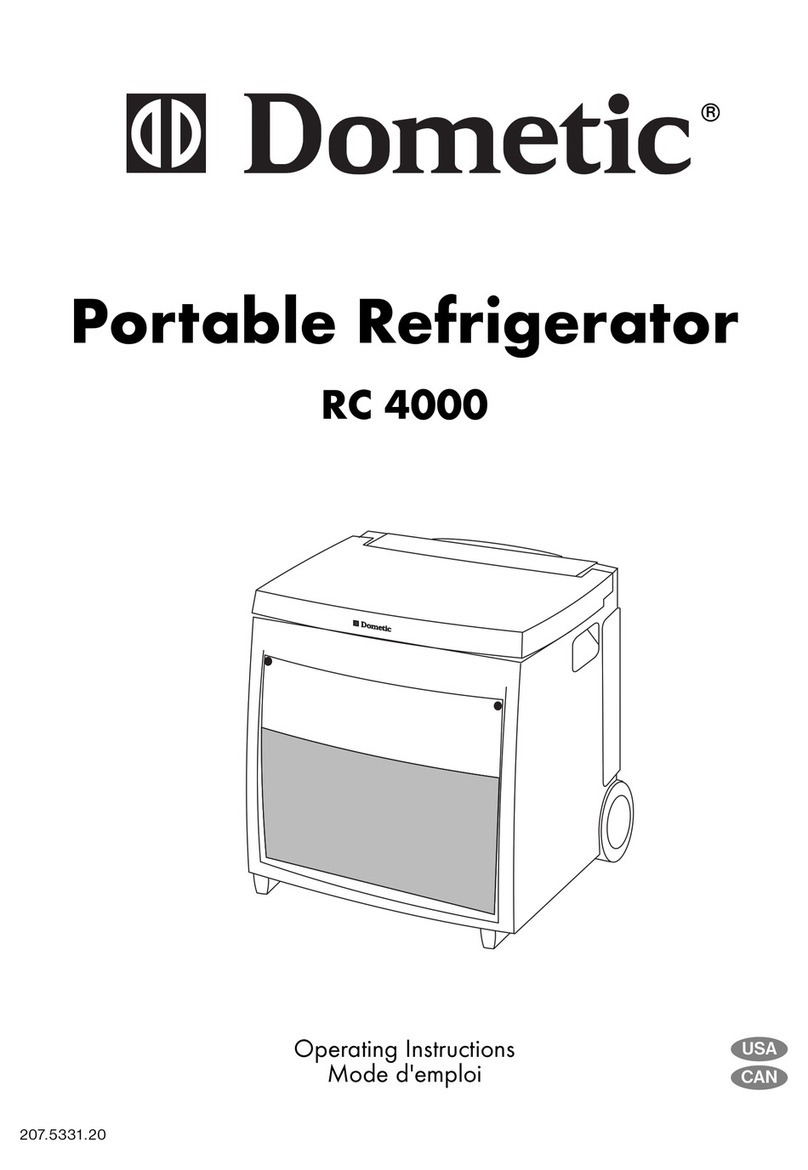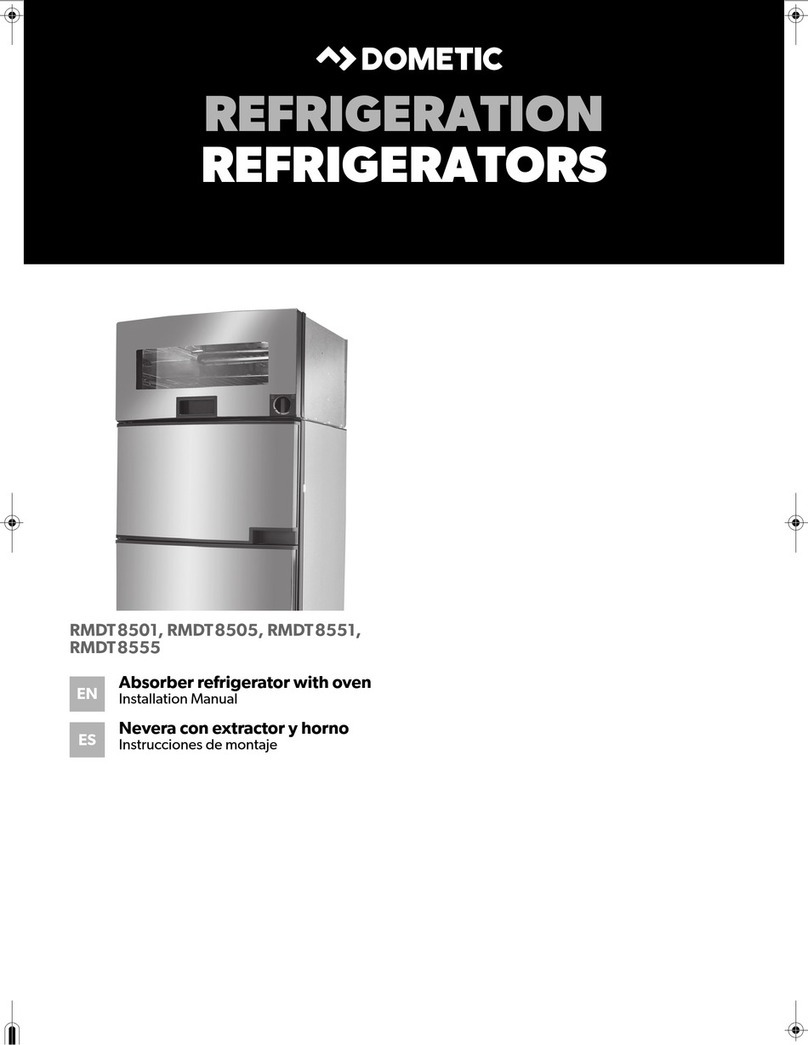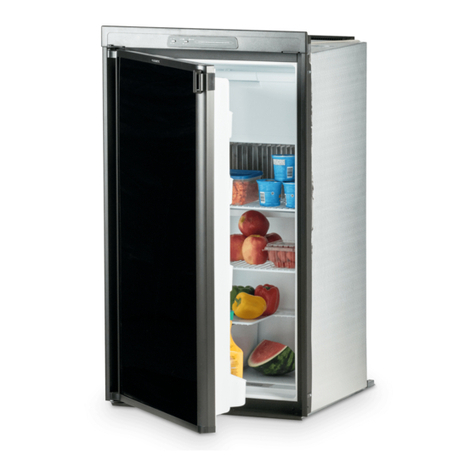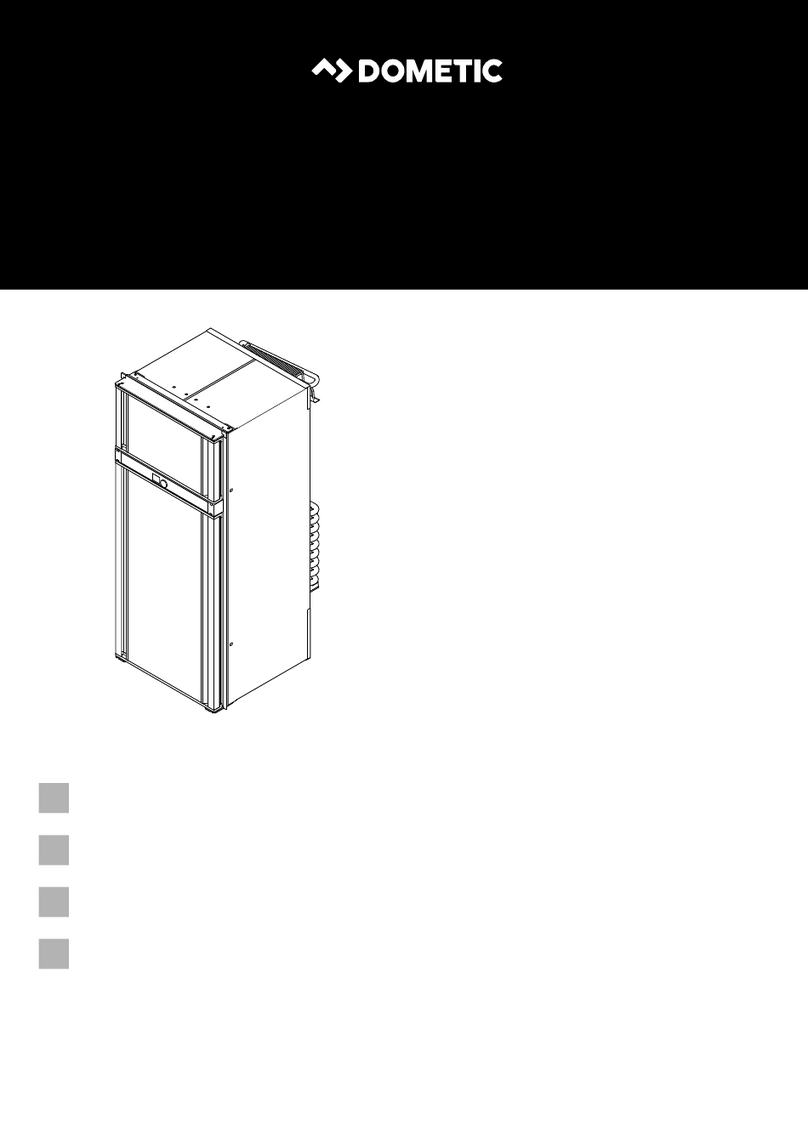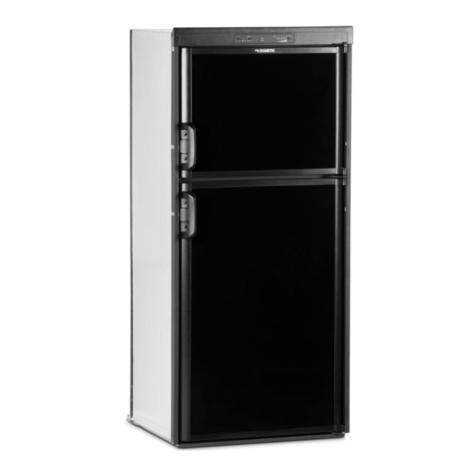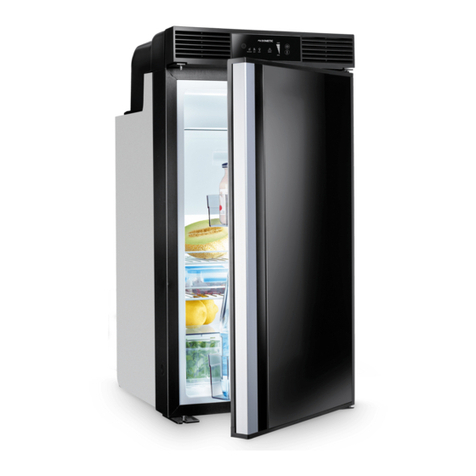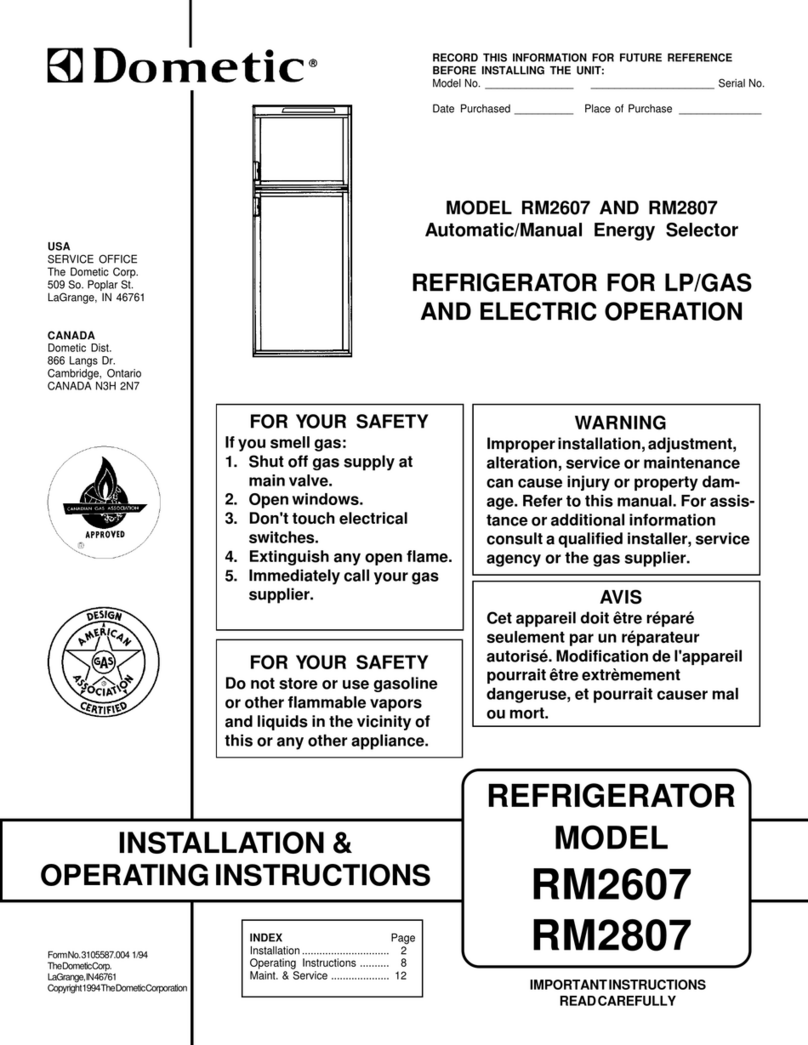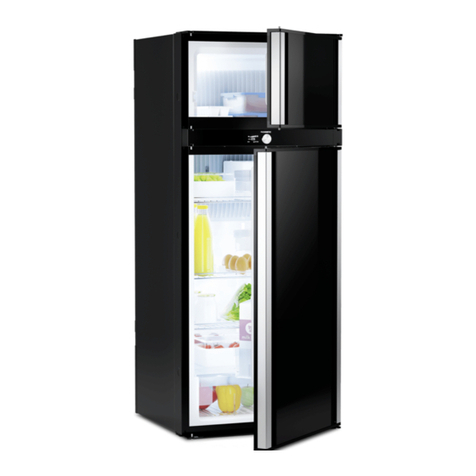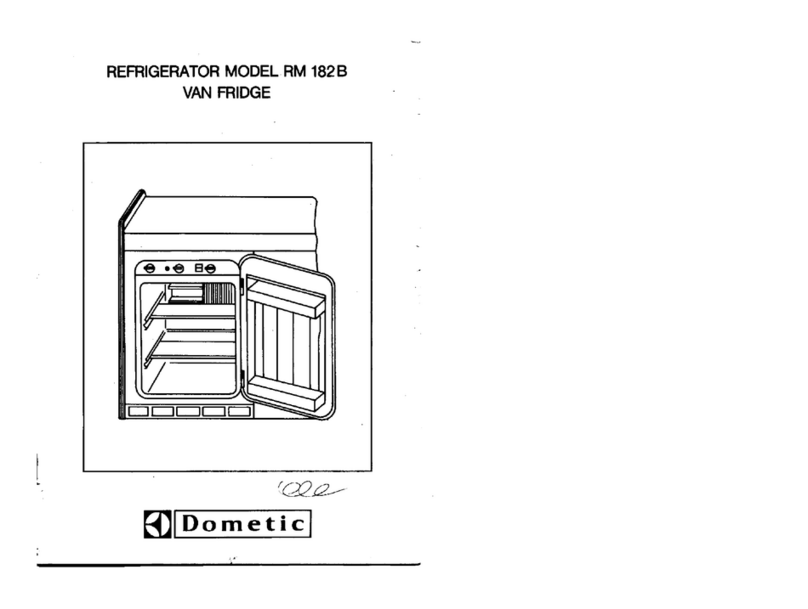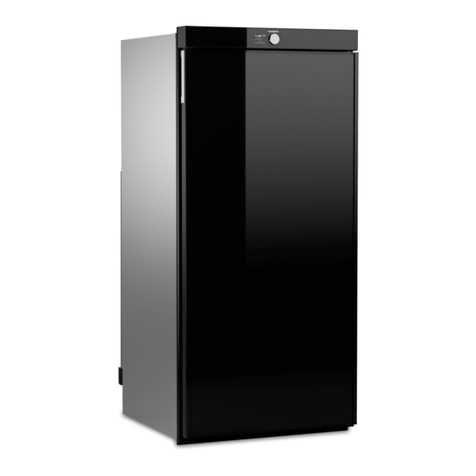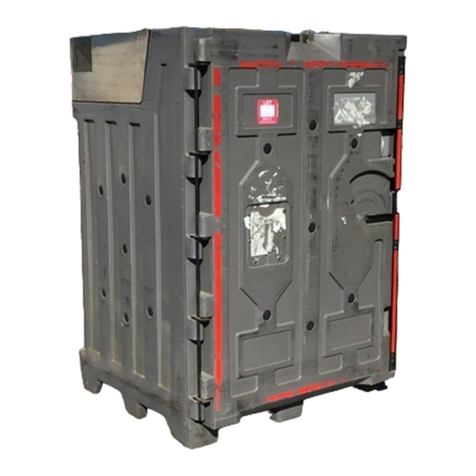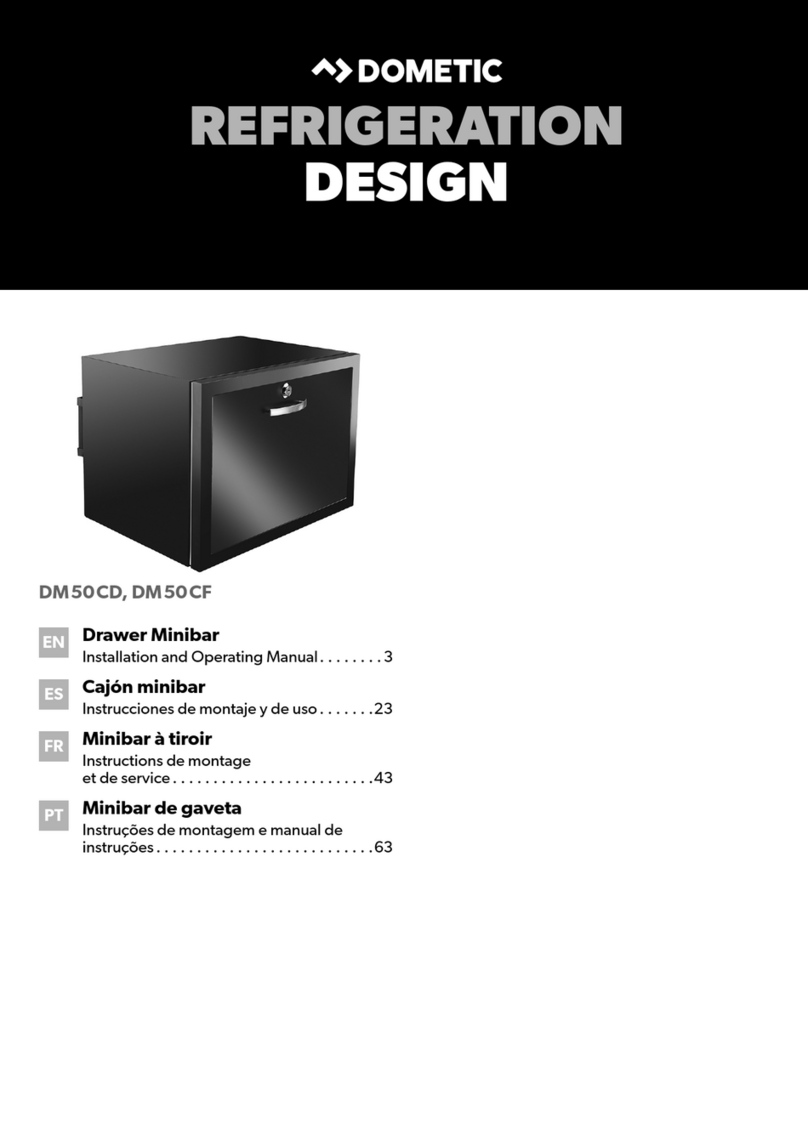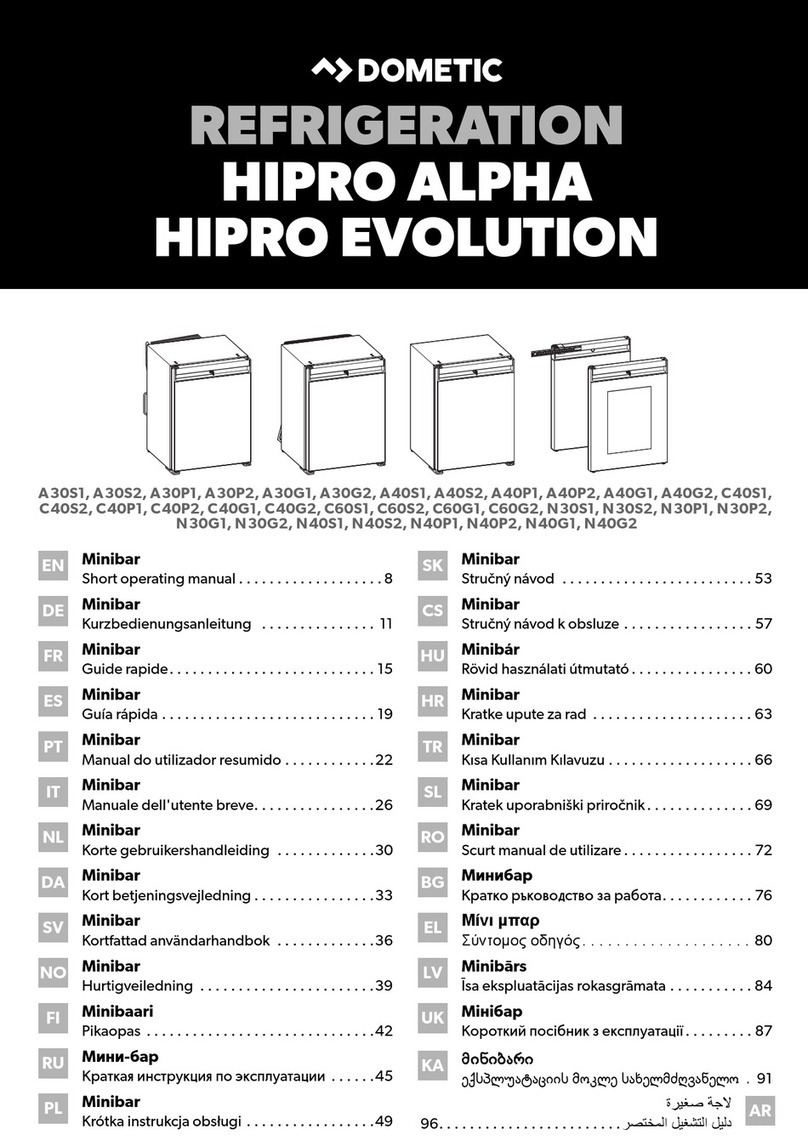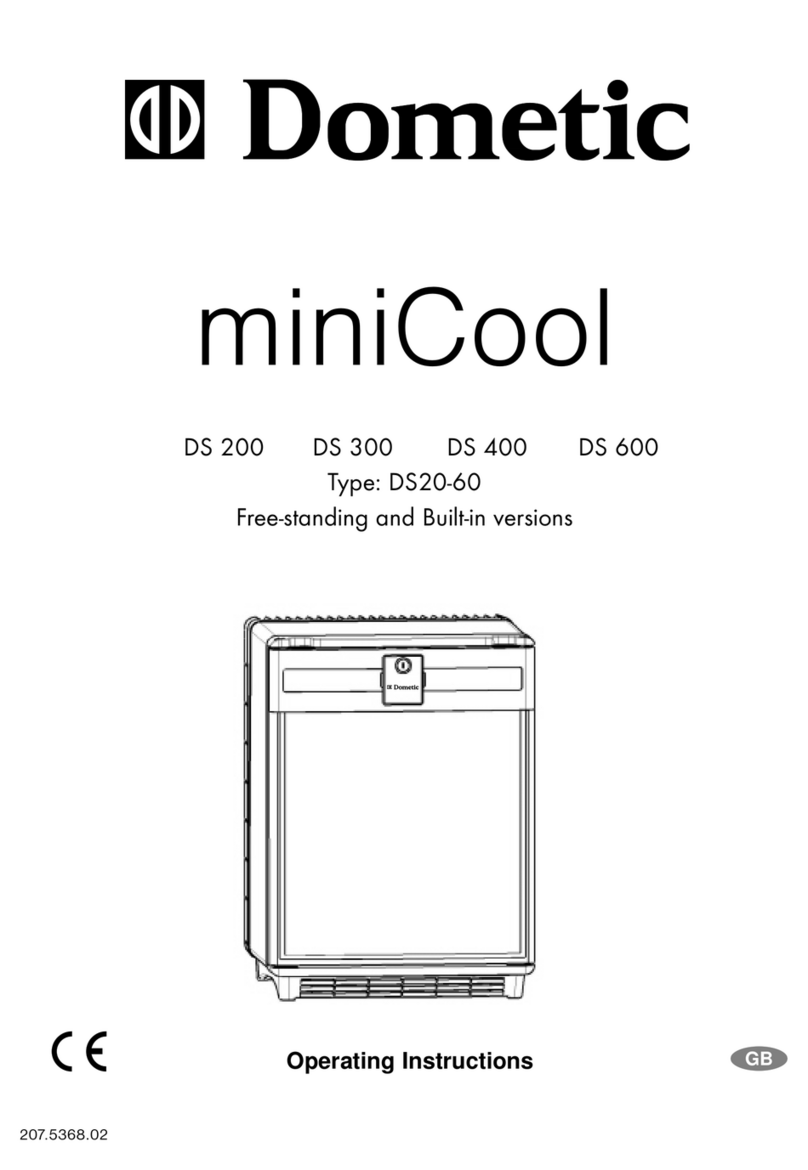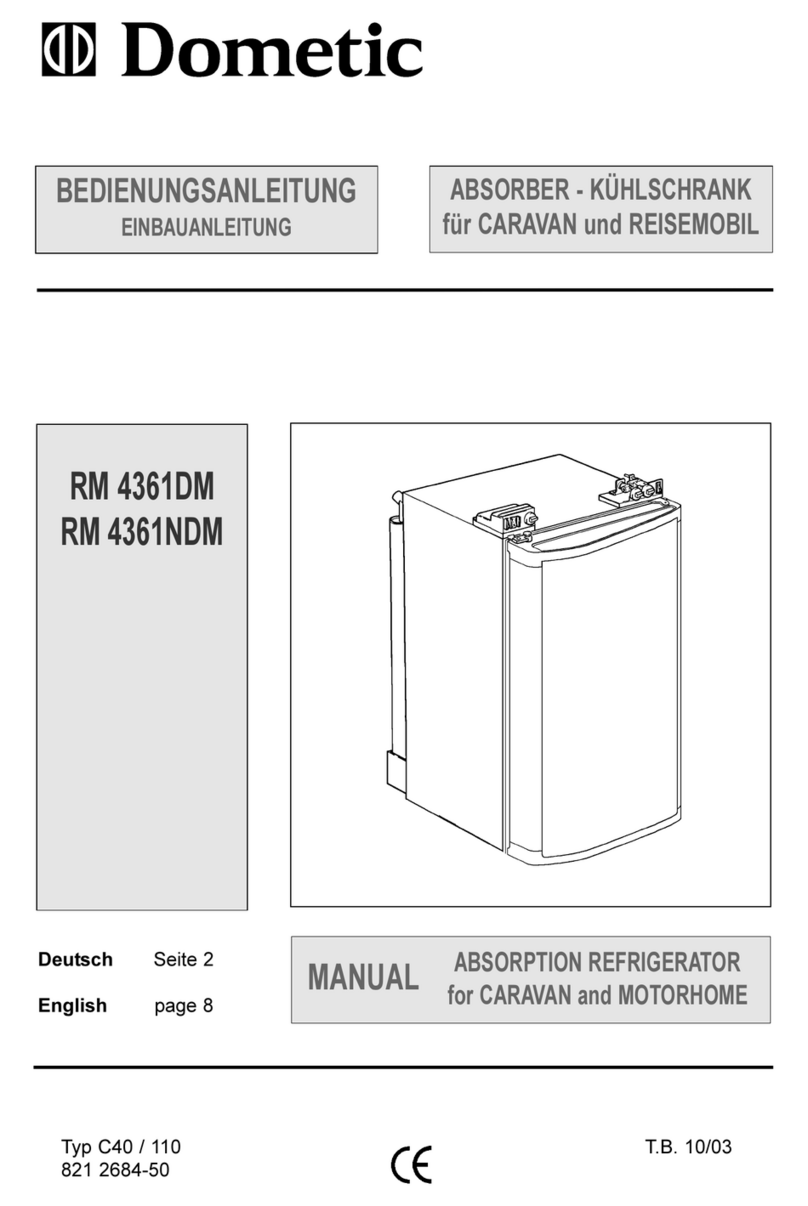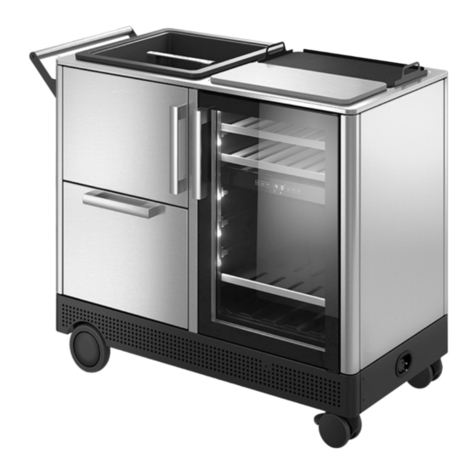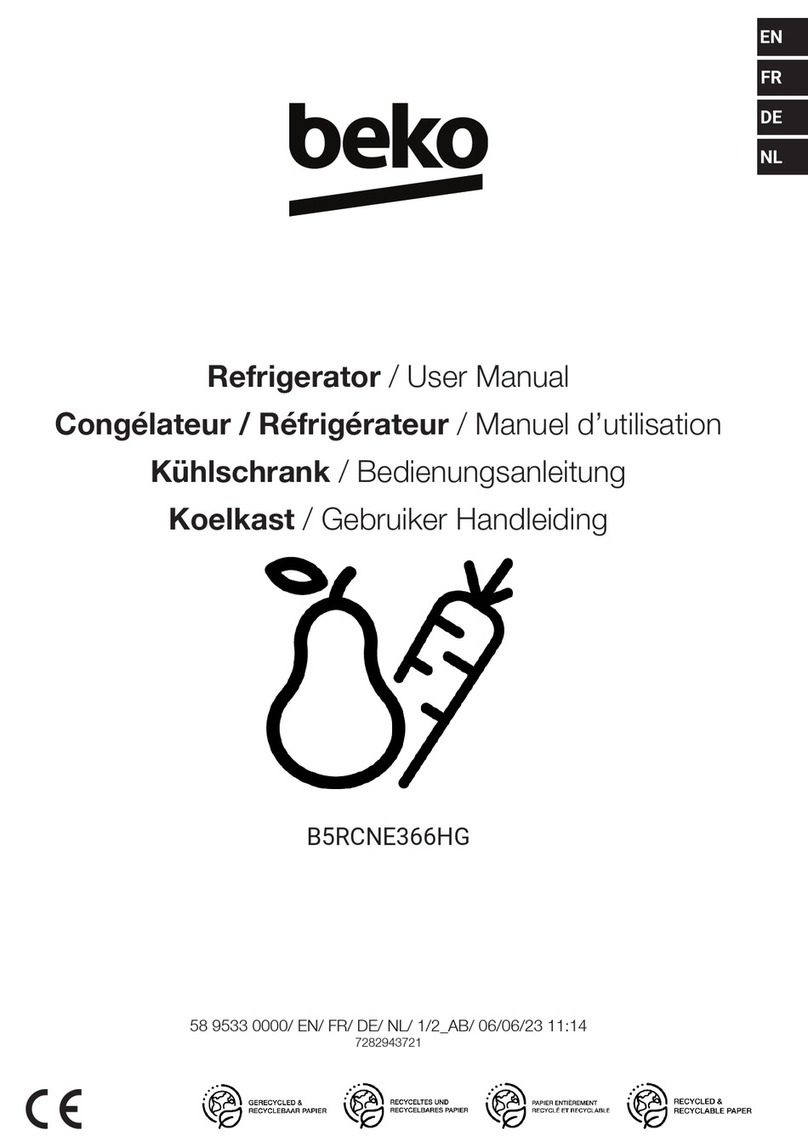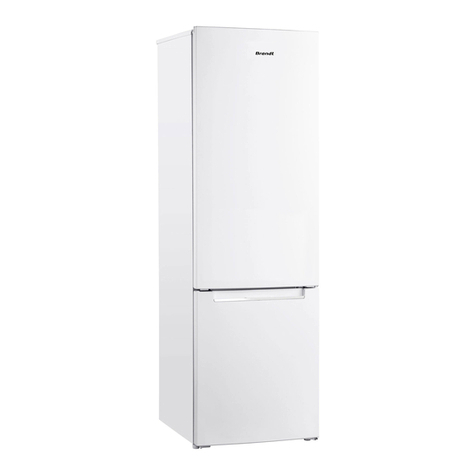13
As the colours of the wires in the mains
lead may not correspond with the col-
oured markings identifying the terminals
in your plug, proceed as follows.
Connect the GREEN-AND-YELLOW co!-
oured wire to the plug termina! marked
letter E or earth symbol or coloured
green or green-and-yellow.
Connect the BROWN coloured wire to the
plug terminal marked letter L or col-oured
red.
Connect the BLUE coloured wire to the
plug terminal marked letter N or coloured
black.
SWITCHING ON
Inside the refrigerator you will find a
plastic bag containing 4 small wheels.
Carefully place the refrigerator on its back
and insert the pins of the wheels into the
metal holders located on the un-derside of
the refrigerator. In this way you can always
move your refrigerator to where it is
needed.
To switch on the refrigerator, plug it into
the socket and turn the thermostat (in the
inside compartment) to position 3 or 4.
The appliance will be cool in about one
hour.
The temperature inside the refrigerator is
affected by location, room temperature
and too frequent opening of the door.
Adjustment of the thermostat dial may
therefore be necessary.
Temperature control
The cooling capacity can be adjusted by
means of the termostat. 0 = cooling is
switched off, from 1-7 the temperature
decreases. When the termostat is at a
medium setting (3 or 4) and the ambient
temperature is normal, the temperature
inside the refrigerator is between 0°--7° C.
Note! Depending on the ambient tem-
perature, service life, and quantity and
temperature of the refrigerated items, the
temperature inside the refrigerator can
drop to below 0°C when the thermostat is
set at 7 (maximum cooling capacity).
Drinks can freeze, glass bottles and cans
may burst!
If the ambient temperature is very high,
the cooling capacity decreases. This does
not mean that the appliance is de-fective.
USING THE REFRIGERATOR
The refrigerator provides sufficient stor-
age space for food, milk, drinks etc. The
shelves on the inside of the door are
suitable for bottles, tins and small pack-
ets. The un-refrigerated space above the
cooling compartment can be used for
storing glasses and snacks.
All food should be stored in its original
packaging or in closed containers. Liq-
uids should also only be stored in closed
bottles or containers. In this way food
remains moist, odours do not form and
neither does excess ice form on the
cooling unit. Allow hot food and drink to
cool down before placing them in the ref-
rigerator.
The temperature in the freezer section of
the unit is set at -12° C. Frozen products
can be stored here for short periods
(please follow the instructions on the
packet very carefully!).
Do not keep any easily combustible
substances such as ether, petrol, ad-
hesive, propane gas etc in the refrig-
erator, it could explode!
ICE CUBES
Fill the ice-cube container to 4/5 with po-
table water. Place the ice-cube container
in the freezer section. Wipe off any ex-
cess water to prevent the ice tray from
freezing to the surface.
To speed up the making of ice cubes, turn
the thermostat to position 7 for a short
while. Remember to turn the dial to its
normal setting when the ice cubes are
frozen.
GB
